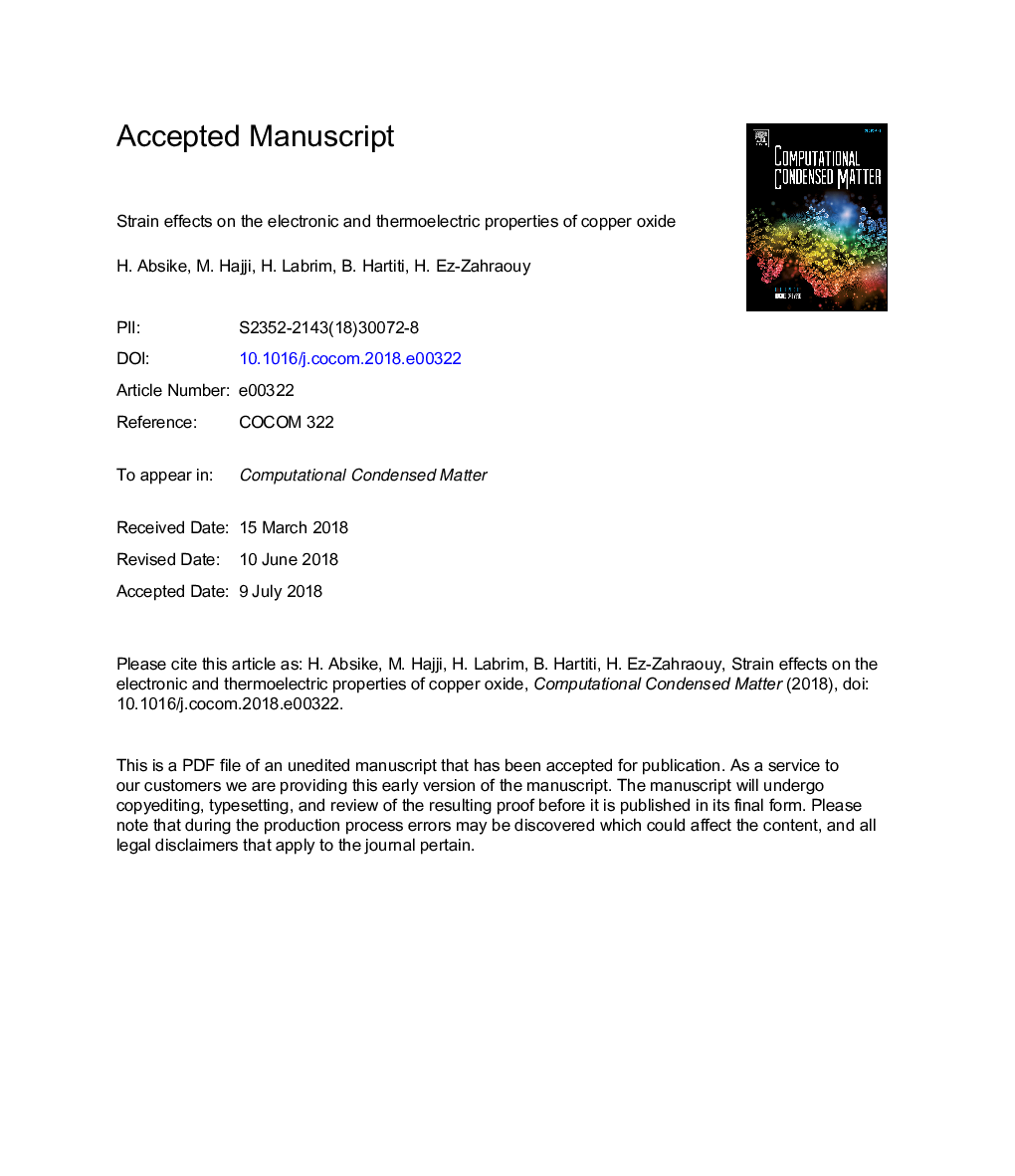| Article ID | Journal | Published Year | Pages | File Type |
|---|---|---|---|---|
| 7956362 | Computational Condensed Matter | 2018 | 19 Pages |
Abstract
Using the density functional theory DFT with Tran-Blaha modified Becke-Johnson (TB-mBJ) and Boltzmann transport theory, we investigate the influence of strain on the electronic structure and the thermoelectric properties of Copper oxide (CuO). In this study, the strain is applied along a, b and c direction with strength from â2% to +2%. Based on the optimized structural parameters, the profiles of the structural properties, and the band gaps, the density of states (DOS) indicate that CuO is an antiferromagnetic semiconductor material with an indirect gap around 1.99 eV. It has been observed that this result matches well with experiment. Consequently, we use the calculated energy band structure in combination with the Boltzmann transport theory in order to explore the thermoelectric properties. For compressive and expansion strains on b and a parameter respectively, we find that the relative Seebeck coefficient is positive while the charge carrier concentration also increases with temperature compared to the unstrained one. Moreover, we explore the evolution of thermal and electrical conductivity for better understanding of the materials thermodynamics and efficiency (ZT). At room temperature and under normal conditions, the present study pushes us to suggest that CuO could be considered as a suitable potential thermoelectric candidate.
Related Topics
Physical Sciences and Engineering
Materials Science
Materials Science (General)
Authors
H. Absike, M. Hajji, H. Labrim, B. Hartiti, H. Ez-Zahraouy,
